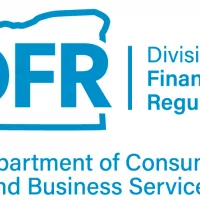
When lockdown orders from the COVID-19 pandemic went into effect across the country, car traffic declined significantly. But research from the Governors Highway Safety Administration (GHSA) shows that even though there were fewer cars on the road during this time, speeding and reckless driving increased. While the relatively empty streets might lull drivers into a false sense of security, speeding is still dangerous and claims the lives of nearly 10,000 Americans every year.
Speeding is responsible for more than a quarter of all traffic fatalities in the U.S. The National Highway Traffic Safety Administration (NHTSA) considers a crash to be speeding-related if one of the drivers is cited for a speeding-related offense or if an officer determines that driving too fast for conditions, racing, or exceeding the speed limit was a contributing factor in the crash.
While NHTSA data shows that both the share of traffic fatalities related to speeding and the speeding-related fatality rate have been declining in recent years, these rates vary at the state level. Nationwide, the average annual speeding-related fatality rate for the five year period from 2014-2018 was 2.97 per 100,000 people. However, at the state level, there is a statistically significant relationship between speeding-related fatalities per capita and the maximum posted speed limit in the state. States with higher posted speed limits often experience more speed-related fatalities.
Another significant factor in speed-related deaths is alcohol consumption. Data shows that over the past five years, 47 percent of all speed-related deaths involved a driver with a positive blood alcohol content (BAC). Among U.S. states, there is a strong positive correlation between the share of fatalities due to speeding and the share of drivers in fatal accidents with a positive BAC.
In light of the increase in speeding during COVID-19, researchers at CoPilot, a car shopping app that helps guide users through the buying process, wanted to examine which states and counties historically suffer from the most speeding-related deaths. The analysts used data from the NHTSA, the U.S. Census Bureau, and the Insurance Institute for Highway Safety to rank which states have the most speeding-related fatalities as a share of all vehicle fatalities. It is worth noting that the data used in the analysis was collected from 2014-2018 and therefore does not reflect recent driving behavior in response to the COVID-19 pandemic.
The analysis found that in Oregon, 28.8% of total traffic deaths involve speeding. Here is a summary of the data for Oregon:
- Traffic fatalities that involve speeding: 28.8% of total
- Speeding-related traffic fatality rate per 100k: 3.09
- Total traffic fatalities that involve speeding (past 5 years): 647
- Total traffic fatalities (past 5 years): 2,246
- Maximum posted speed limit: 70 mph
- Worst county for speeding: Clackamas
For reference, here are the statistics for the entire United States:
- Traffic fatalities that involve speeding: 27.0% of total
- Speeding-related traffic fatality rate per 100k: 2.97
- Total traffic fatalities that involve speeding (past 5 years): 48,622
- Total traffic fatalities (past 5 years): 180,067
- Maximum posted speed limit: 85 mph (Texas)
- Worst county for speeding: Washington County, RI















